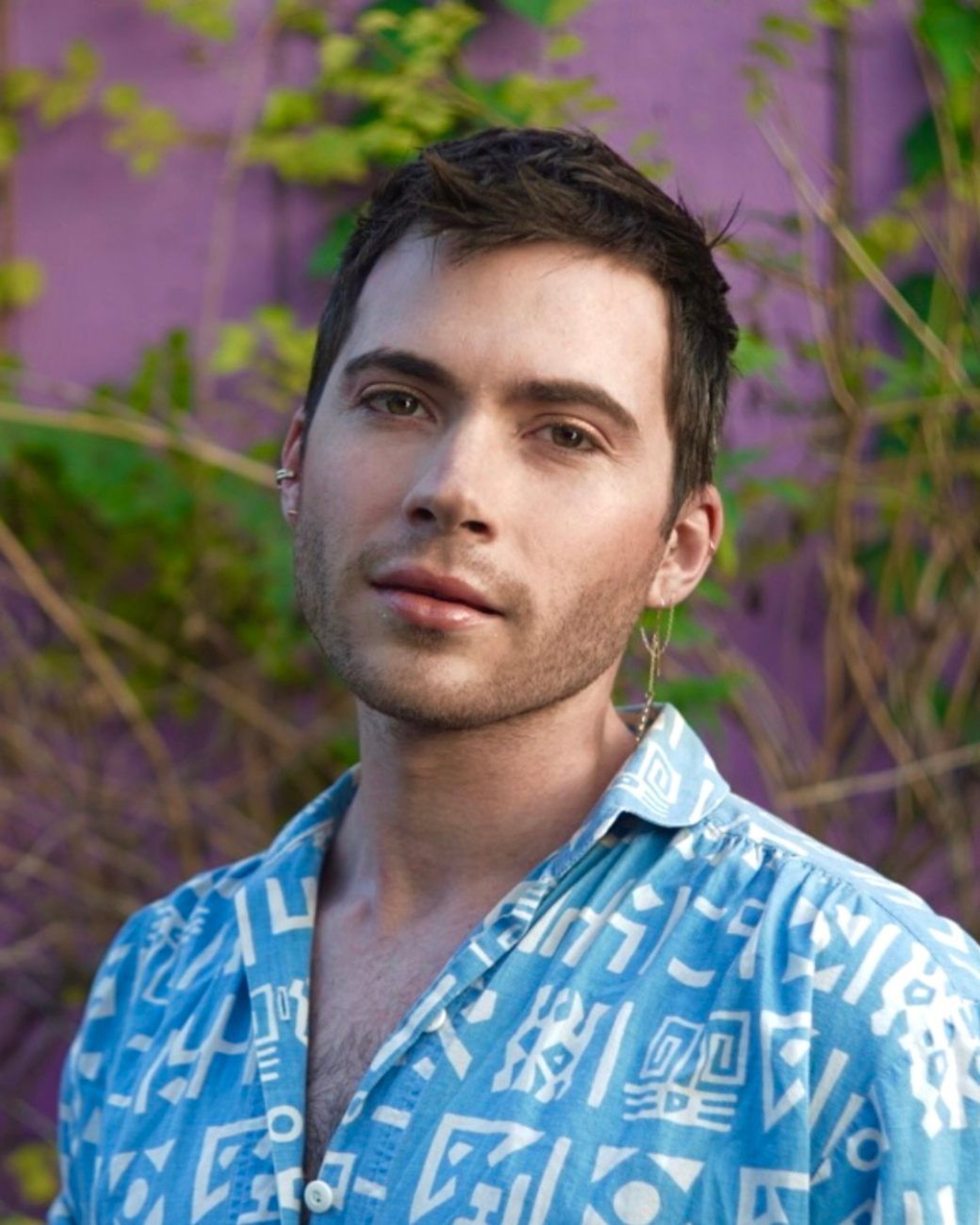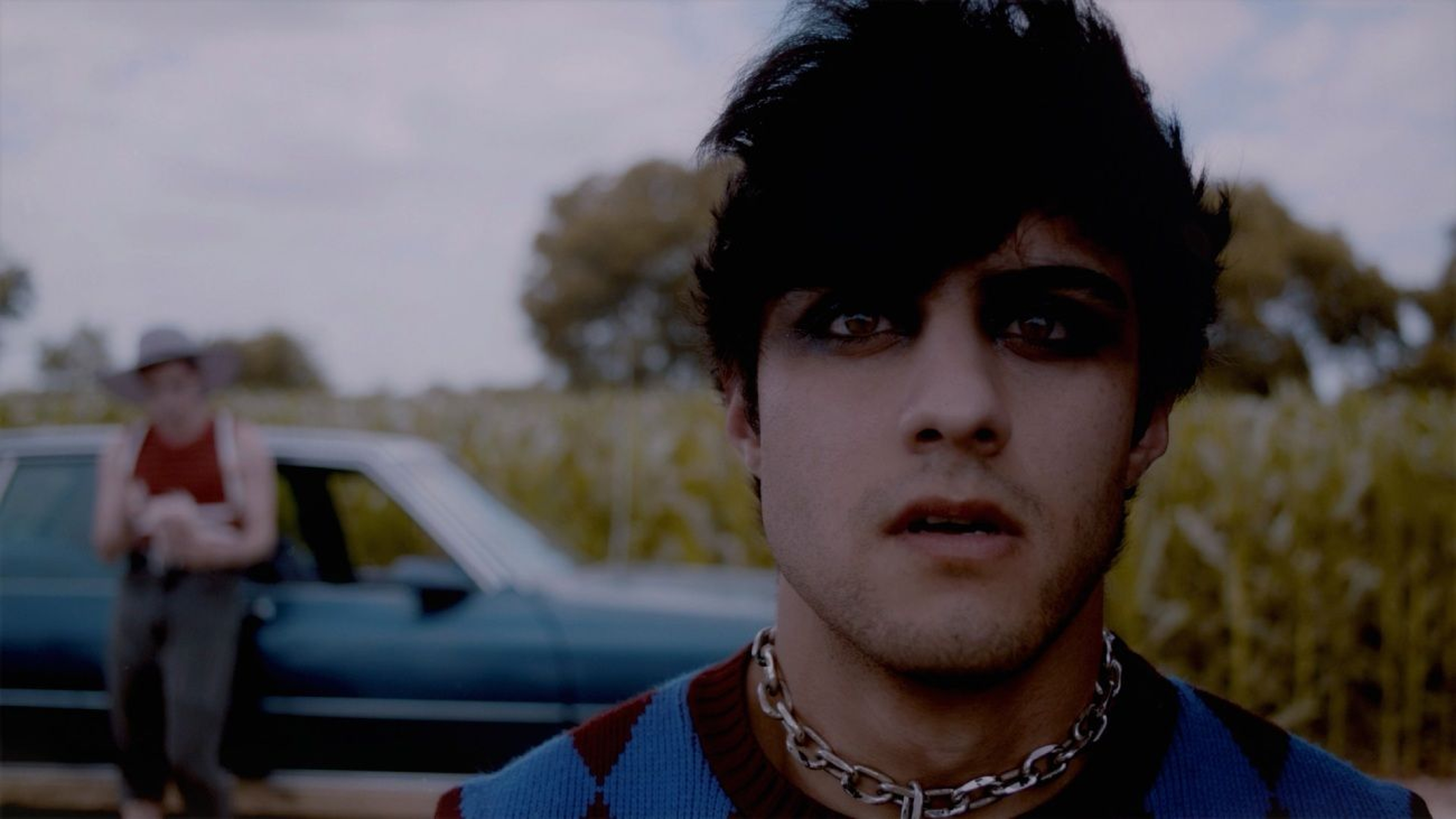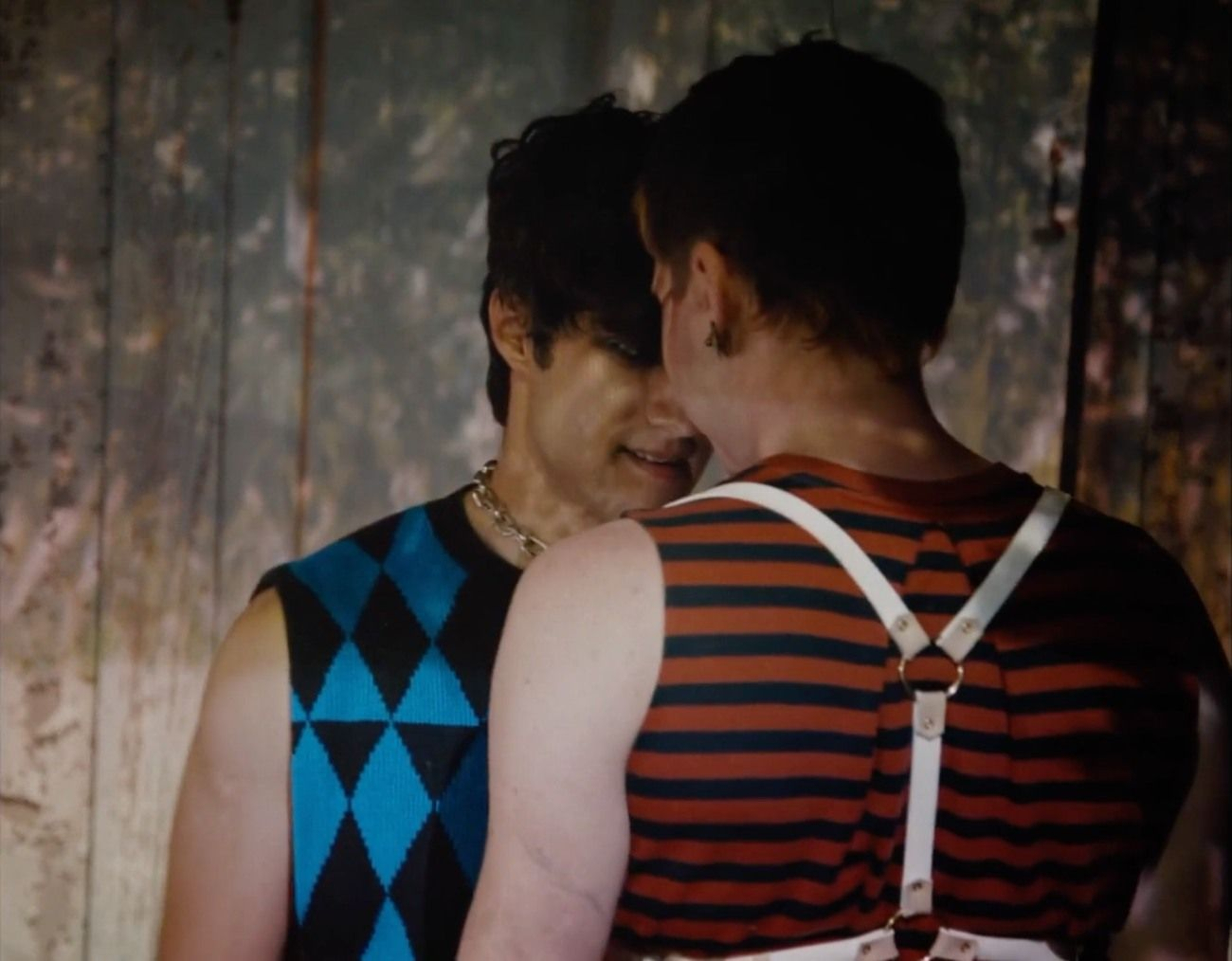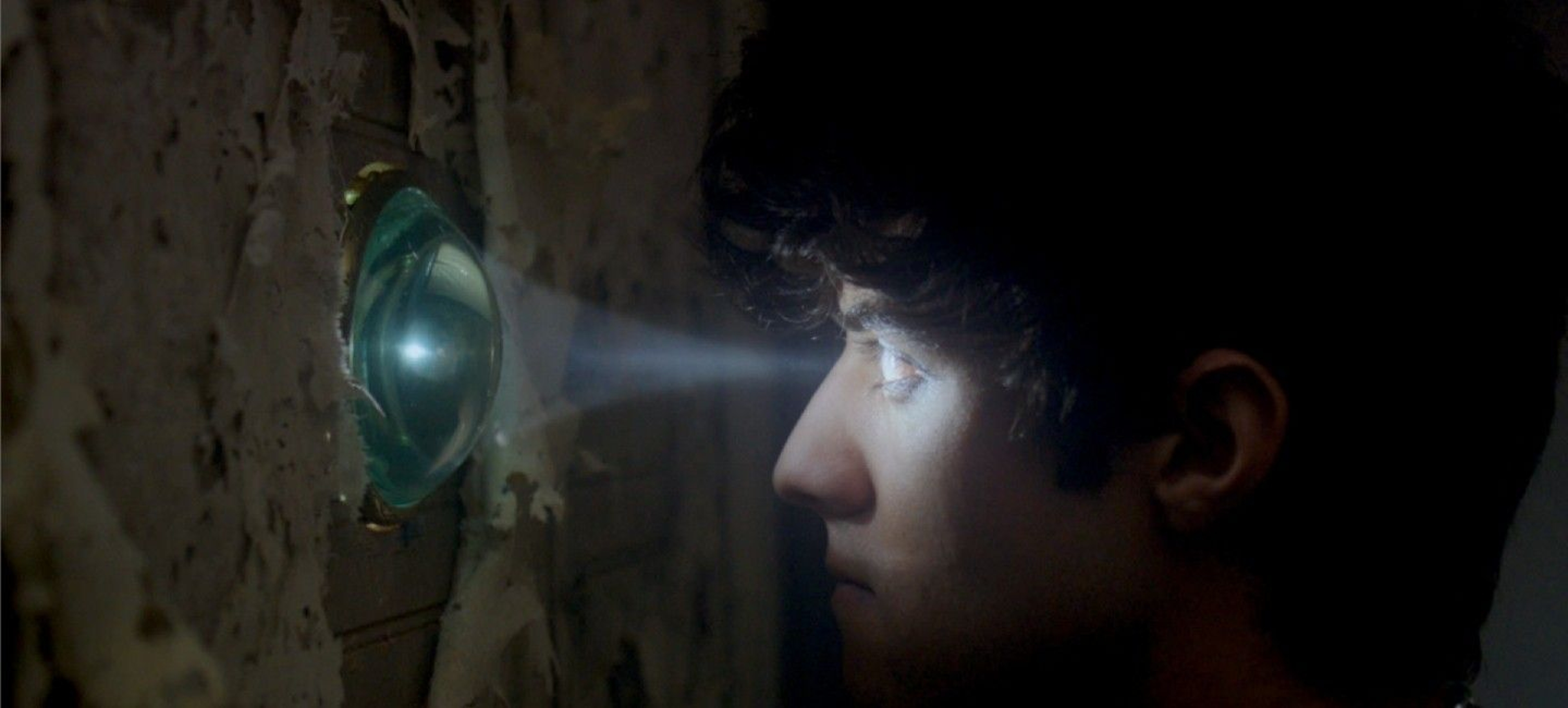Taylor Mansmann’s short film Obscura was one of five works chosen by a special jury of filmmakers, curators, and critics for the Focus Features & JetBlue Student Short Film Showcase. Created as part of their MFA program at the University of Texas at Austin, Mansmann’s Obscura was selected from projects from 23 graduate programs. After discovering a surreal camera obscura built into an abandoned crop house, two queer characters (played by Mansmann and Jesse Ray Payne) at a romantic crossroads must overcome projections of their deepest desire in this genre-bending film.
We asked Mansmann to tell us a little about the inspiration for their film, the artists who influenced him, and their plans for the future.
Follow him on Instagram: @OBSCURA_SHORTFILM and @TAY.MANN.
Taylor Mansmann's Obscura
Where did the idea for Obscura come from?
The aesthetics of the 1980s live on within alternative queer sub-communities, continuing to inspire an underrepresented intersection of glamor and punk sensibilities for “queerdos” around the world. So I thought it would be fun to throw outspoken members of our community into an ’80’s horror film, using the anachronism of their aesthetic to reimagine a famously queer- coded and campy decade of horror. Only now, our explorations of love, our fears, and our desires can be center stage.
A lot of my work explores interpersonal projection. We are so often projecting our own fears onto others or accepting cultural projections made onto us as our own truth. Upon seeing a depiction of a camera obscura (a natural phenomena of light projection that has been exploited since 500 BC) in Teller’s documentary Tim’s Vermeer, I knew I had found a visual metaphor around which to construct a film. And so with my obscura in hand, I began funneling into it all of my mid-pandemic angst and heartbreak and fear, and watched with pen in hand as all of my darkest bits, magnified by a collectively dark moment, refracted out into the light of our film Obscura.
Your film draws on so many different genres, from horror to new wave. How are they linked in your mind?
Obscura was a genre experiment from the start. A queer love story meets adrenaline-inducing horror; the comedic potential of “gays reacting to 80’s monsters” meets lyrical surrealism. As an artist, I tend to frame naturalism within poetic allegory, the nature of which varies depending on the genre I’m exploring. There is something really exciting that happens when you can inspire an audience’s belief in your characters, their desires and fears, their realness beyond the existing archetypes of on screen representation. And then to take that belief and split it open, allowing the interiority of the world you’ve created to run out and paint all corners of the frame until we are left with a mirror of our subjective experience. The result (or hope) is a sensational viewing experience emotionally mimetic of a character’s dramatic revelation. In that vein, I find new wave movements to be particularly inspiring in establishing credibility. Life is built in small moments, and film can follow suit, especially when you are able to juxtapose the right moments and employ stylistic tactics to connect the dots. In this case, horror was the perfect vehicle for the allegorical expansion of that credibility. Heartbreak triggers our deepest fears and shame. And our need to make sense of the ensuing pain inspires us to make monsters of each other and ourselves.
My films can be challenging, sometimes brazenly reflecting our darker tendencies. But I always strive for tonal balance. And I always keep a light on: a tongue in cheek, a compassionate hand held in the dark, a touch of magic. No matter how wild the ride gets, how long the shadows stretch, it always begins and ends with love.

Filmmaker Taylor Mansmann
How did you find your cast?
Well, I did act in the film myself. But that was not the plan. I mean, performance was my first love, so what a joy to exercise that passion again. However, I had no pretense about the balancing act of captaining a ship while maintaining the mental clarity to believably drop into a performance. In that sense, I was hesitant to take that on, and only arrived at that decision with our creative producer An Chen’s encouragement after months of mid-pandemic auditioning. At the time, I was doing a lot of street casting, outreach on social media and in queer spaces, reading with first-time actors for sometimes hours trying to make some magic happen. But ultimately, the horror genre begs an amplified conviction to believe and play within a reality that could very well make you look and feel silly. Jesse Ray Payne came to us on Backstage and really exemplified that conviction. He has a philosophy I admire—that of total interconnected potentiality existent within all of us—a belief that allows him to dive into his roles and make emotional connections with the courage and non-judgment of an open heart. In the film, his character Robin wants nothing more than to lose himself entirely in love. So the stars aligned. The unwavering commitment Jesse showcased throughout production as he tackled (or was tackled by) every challenge I threw at him (and there were many) was really a testament to his being the final girl Obscura needed.
What In the final product most captures what you saw in your mind when you first imagined the film?
The conceit of the film began with a mental snapshot of a camera obscura built into an abandoned house: an inverted landscape projected across the decaying room as interior and exterior worlds merge into one. But obscuras are a lowlight phenomenon, the effects of which are dependent on the sun’s position in the sky. So in order to properly light and capture the interior obscura scenes, we had to recreate the optical effect with six projectors wired through the ceiling and the buzzard-filled attic to a generator outside. After a lot of workshopping with our projectionist (and a buzzard truce involving deli meats), it was extremely gratifying to witness my original seed of inspiration blossom on-screen with such integrity to the original vision. Interior and exterior worlds merge into one.

Taylor Mansmann and Jesse Ray Payne in Obscura
What was the biggest lesson learned working on Obscura?
Every film affirms the big lesson: you can’t do it alone! And that was certainly true for Obscura, which would not have been possible without such a remarkable team of collaborators and friends. Mary, An, Kenya, Will, Sebastian, every contributor in between (and there were many): THANK YOU!
Particular to this film: authenticity is not gained at the expense of relatability. I’ve always been interested in writing from the margins. But there is a mental trap in amplifying underrepresented voices: the fear that your hard work and sacrifice will be written off as “esoteric” and so fall through the cracks. The pressure to dilute what makes a character or community unique in order to remain marketable to a mainstream audience. But the heart of every character beats the same. And ultimately the courage to be original and honest and specific is really the freshness we need to re-saturate core truths that can ripple out beyond our fragile perceptions of difference. Tackling obscure horror was my lesson in that courage. It asked me to be unapologetically weird and painfully honest. And frankly I’ve never received more genuine enthusiasm or desire to relate to my characters. What an immensely heartening affirmation of the biggest lesson yet: y’all are weirdos, too.
As an emerging filmmaker, who are your influences (filmmakers, artists, writers, or friends)?
You might catch some baby Ari Aster, Robert Eggers, Ana Lily Amirpour, Jordan Peele, and David Lynch horror influences in Obscura. But I often return to the work of Andrew Haigh, Paolo Sorrentino, Agnes Varda, the Daniels, Luca Guadagnino, Andrea Arnold, Almodovar, and Xavier Dolan…to name just a few! In terms of novelists, definitely influenced by the wit and irony of Tom Robbins and the stunning prose of Akwaeke Emezi, who manages such a poetic interpretation of queerness through their spiritual lens.
Really, too many artists to thank for inspiration, ranging from whole bodies of work to a single scene that entirely wrecked me. Perhaps every project and every artist is an amalgam of different references. There’s no originality, just eclectic taste. But generally I draw a lot of inspiration from everyday queer people, drag artists, neurodivergent thinkers, and all those exhibiting the courage to carry out their own inquisition. Our community carries hurt, but expresses incredible resilience in joy, rhythm, and humor. And my approach to storytelling follows suit.

Jesse Ray Payne and Taylor Mansmann in Obscura
What was the first film you saw that made you want to be a filmmaker and why?
Growing up, I was extremely hungry for any kind of LGBTQ+ representation. That solitary search for recognition is really what brought me outside of pop culture films and into the indie/arthouse world. I must have been around 15 when I saw Gus Van Sant’s My Own Private Idaho and it hit me like a ton of bricks. The expansive landscapes, the bold visual style, the new wave editing tactics, the twisted, tender, tragic yearning of River Phoenix. It lit me on fire. Van Sant achieves a remarkable fluidity in genre, expressing an exuberant, Shakespearean depiction of transient sex workers, and then seamlessly drops into a paradigm of American Neorealism. There’s a stunning scene by a campfire in which River Phoenix’s character confides his love to Keanu Reeves. He asserts for the first time the potentiality of his heart: his capacity to love another man. Style falls aside as we witness the quiet, heart-wrenching sincerity of queer yearning, not as a sexual deviancy, but as a base human need for connection. It’s a tragedy, the film itself, and the fate of River following the film. The first person to mirror the workings of my heart already gone, passed within the first year of my life. Perhaps at the time, I saw my life, too, as a tragedy still unfolding. But what a gift it was to be seen. And to return that gift is all I can hope for. Though maybe it’s time to rewrite the ending.
Are you working on a feature film? What is it about?
I’m working on a few projects at the moment including a revision of my coming of age love story/queer fantasia Underwing, which follows a femme boi Julian leaving small town Texas to embark on an epic road trip to the gay mecca of San Francisco…only to discover that queerness exists in the in between, sprouting in resilience through every crack in America. I’m also excited to be developing a new feature called The Wedgening, a Daniels-esque exploration of queer self-actualization and interconnectedness centered around the aftermath of a kink wedgie pulled beyond its limit, existentially tearing a hole in the very fabric of the cosmos (serious poetic allegory ensues, etc, etc).
